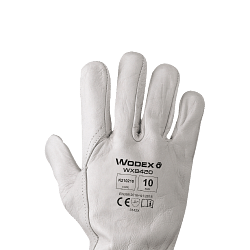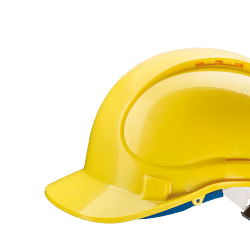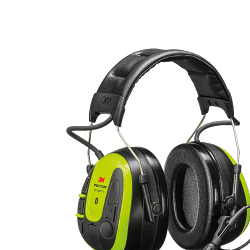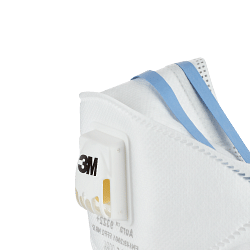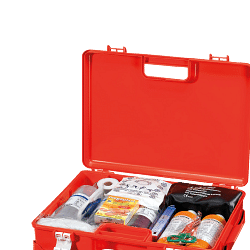Register and use the discount code NEWWELCOME to get 10% off on your first purchase. GET DISCOUNT.
Register and use the discount code NEWWELCOME to get 10% off on your first purchase. GET DISCOUNT.
Register and use the discount code NEWWELCOME to get 10% off on your first purchase. GET DISCOUNT.
Free shipping in 24h from 200€
Catalogues
Customer service
How can we help you?
- Faq
- Customer service
02.927371
- Supporting big orders
02.38298620
-
info@linkindustrialtools.it
- Request assistance with form
Or contact us with the chat in the lower right corner
< Safety equipment
- Home
- Safety equipment
- Dust masks ffp3, fpp2 and fpp1
Dust masks ffp3, fpp2 and fpp1
In the context of mechanical workshops, occupational safety is a crucial aspect that cannot be neglected. Among the various protective measures, the use of ffp3, ffp2 and ffp1 dust masks is a key element in ensuring the health of operators. These masks are designed to protect the respiratory tract from harmful airborne particles such as fine dust, fumes and mists, which can cause serious respiratory problems if inhaled.
Understanding dust masks: ffp3, ffp2 and ffp1
Dust masks are classified into three main categories: ffp1, ffp2 and ffp3. This classification is based on their ability to filter out particles of different sizes and their filtration efficiency. The ffp1 masks offer the basic level of protection, with a filtration efficiency of at least 80 per cent. They are suitable for environments where the particles are non-toxic and do not pose a significant health risk.
The ffp2 masks, on the other hand, offer intermediate protection, with a filtration efficiency of at least 94%. They are used in environments where particles can be harmful to health, such as in the presence of heavy metal dust or welding fumes. Finally, ffp3 masks provide the highest level of protection, with a filtration efficiency of at least 99%. They are essential in highly contaminated environments, where particles are particularly dangerous, such as in the presence of asbestos or silica dust.
The importance of dust masks in machine shops
In machine shops, operators are often exposed to a variety of airborne particles generated by processes such as welding, grinding and metalworking. These particles can include metal dust, welding fumes and other potentially harmful substances. The use of appropriate dust masks is therefore essential to prevent the inhalation of these particles and protect the respiratory health of operators.
The ffp3, ffp2 and ffp1 masks are designed to fit comfortably around the face, providing an effective seal that prevents particles from entering through the edges. In addition, many of these masks are equipped with exhalation valves, which reduce the build-up of heat and moisture inside the mask, improving user comfort during prolonged use.
Advantages of using dust masks
The adoption of dust masks in mechanical workshops offers numerous advantages. Firstly, they help reduce the risk of occupational respiratory diseases, such as occupational asthma and silicosis, which can result from prolonged exposure to harmful particles. In addition, the use of appropriate masks can improve worker productivity by reducing respiratory fatigue and increasing comfort during work activities.
Another significant benefit is compliance with occupational safety regulations. The use of personal protective equipment, such as dust masks, is often required by occupational safety laws, and their use can help companies avoid penalties and demonstrate their commitment to employee safety.
Frequently asked questions about the use of dust masks
One of the most common questions concerns the duration of use of dust masks. In general, ffp1, ffp2 and ffp3 masks are designed to be disposable and should be replaced regularly, according to the manufacturer's instructions and conditions of use. It is important not to reuse disposable masks, as their filtration capacity may decrease with prolonged use.
Another frequently asked question concerns the difference between masks with and without a valve. Masks with a valve offer greater comfort during prolonged use, as the valve facilitates exhalation and reduces heat and moisture accumulation. However, non-valve masks may be preferred in environments where it is important to avoid the spread of exhaled particles, such as in healthcare settings.
Conclusions
In summary, ffp3, ffp2 and ffp1 dust masks are essential tools for ensuring respiratory safety in machine shops. The choice of the appropriate mask depends on the level of exposure to particles and the nature of the substances present in the work environment. Investing in high-quality protective equipment not only protects the health of operators, but also contributes to a safer and more productive working environment.
Read More Read LessUnderstanding dust masks: ffp3, ffp2 and ffp1
Dust masks are classified into three main categories: ffp1, ffp2 and ffp3. This classification is based on their ability to filter out particles of different sizes and their filtration efficiency. The ffp1 masks offer the basic level of protection, with a filtration efficiency of at least 80 per cent. They are suitable for environments where the particles are non-toxic and do not pose a significant health risk.
The ffp2 masks, on the other hand, offer intermediate protection, with a filtration efficiency of at least 94%. They are used in environments where particles can be harmful to health, such as in the presence of heavy metal dust or welding fumes. Finally, ffp3 masks provide the highest level of protection, with a filtration efficiency of at least 99%. They are essential in highly contaminated environments, where particles are particularly dangerous, such as in the presence of asbestos or silica dust.
The importance of dust masks in machine shops
In machine shops, operators are often exposed to a variety of airborne particles generated by processes such as welding, grinding and metalworking. These particles can include metal dust, welding fumes and other potentially harmful substances. The use of appropriate dust masks is therefore essential to prevent the inhalation of these particles and protect the respiratory health of operators.
The ffp3, ffp2 and ffp1 masks are designed to fit comfortably around the face, providing an effective seal that prevents particles from entering through the edges. In addition, many of these masks are equipped with exhalation valves, which reduce the build-up of heat and moisture inside the mask, improving user comfort during prolonged use.
Advantages of using dust masks
The adoption of dust masks in mechanical workshops offers numerous advantages. Firstly, they help reduce the risk of occupational respiratory diseases, such as occupational asthma and silicosis, which can result from prolonged exposure to harmful particles. In addition, the use of appropriate masks can improve worker productivity by reducing respiratory fatigue and increasing comfort during work activities.
Another significant benefit is compliance with occupational safety regulations. The use of personal protective equipment, such as dust masks, is often required by occupational safety laws, and their use can help companies avoid penalties and demonstrate their commitment to employee safety.
Frequently asked questions about the use of dust masks
One of the most common questions concerns the duration of use of dust masks. In general, ffp1, ffp2 and ffp3 masks are designed to be disposable and should be replaced regularly, according to the manufacturer's instructions and conditions of use. It is important not to reuse disposable masks, as their filtration capacity may decrease with prolonged use.
Another frequently asked question concerns the difference between masks with and without a valve. Masks with a valve offer greater comfort during prolonged use, as the valve facilitates exhalation and reduces heat and moisture accumulation. However, non-valve masks may be preferred in environments where it is important to avoid the spread of exhaled particles, such as in healthcare settings.
Conclusions
In summary, ffp3, ffp2 and ffp1 dust masks are essential tools for ensuring respiratory safety in machine shops. The choice of the appropriate mask depends on the level of exposure to particles and the nature of the substances present in the work environment. Investing in high-quality protective equipment not only protects the health of operators, but also contributes to a safer and more productive working environment.



